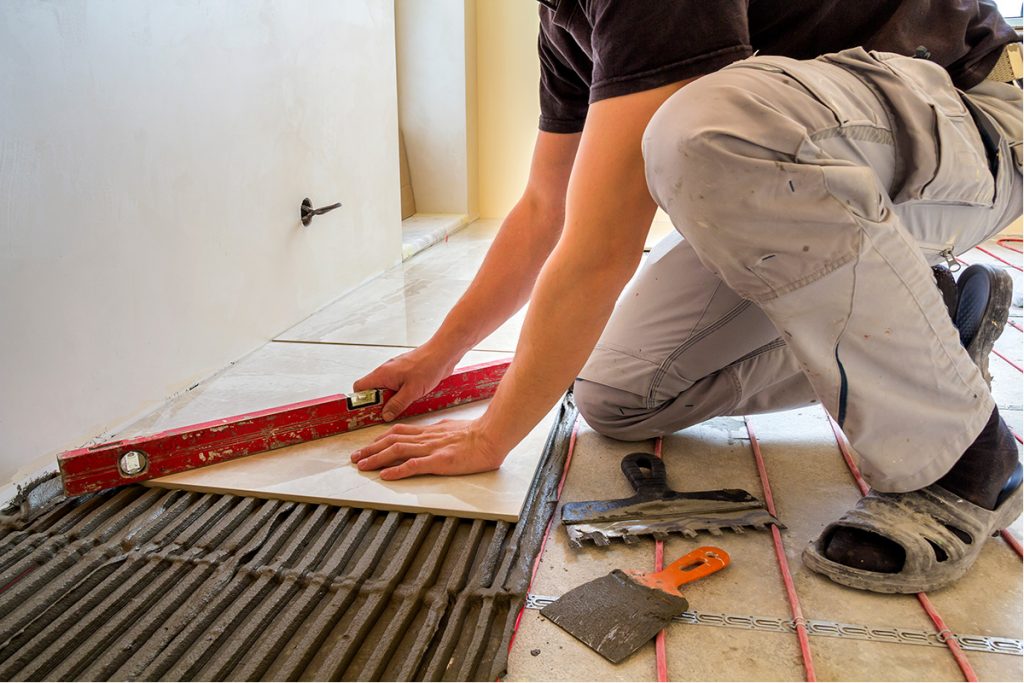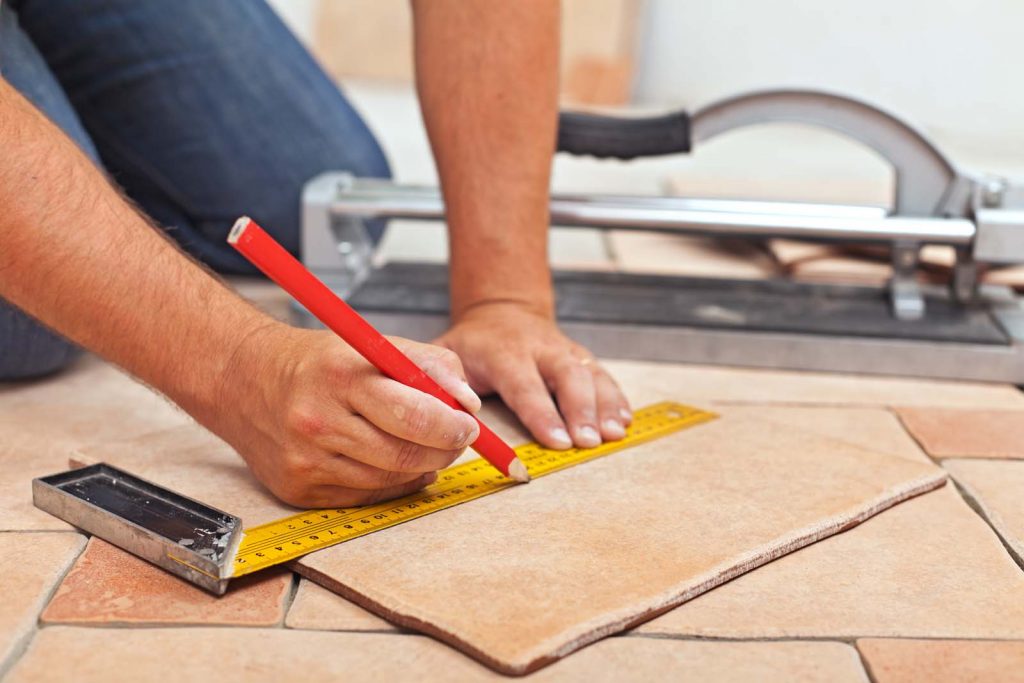You may have been putting it off for months, but that tiling job won’t complete itself. If you think that you don’t have the necessary skills, just remember, even the professionals had to start somewhere.
This article aims to take you through the best way to tile and grout and how to avoid the pitfalls along the way.
First:
Plan Your Layout
Before you pick up that trowel, you need to establish your tile layout or the pattern that you want your tile to fill the space. This can be easier said than done, as there are so many variations. Some of the most popular include:
- Linear – The most common design where the tiles get placed in a grid system with the grout running in straight lines.
- Diamond – Like linear, but the tiles are rotated diagonally, so the grout lines run at 45-degree angles.
- Brick – Looks the same as the layout on a typical house brick design.
- Herringbone – The tiles are interlaced end to end to create an intricate pattern.
The linear pattern might be the best for a novice tiler, but feel free to challenge yourself to a more complicated design if it fits better with your design vision.
Square Footage
Knowing the square footage of the space you want to tile is crucial. Once you have this worked out, you can then calculate out how many packs of tiles you will need. This simple process could save you money. Most tile packaging states its square foot coverage, so divide the square footage of the tiling area you want by the coverage on the pack and that will give you the number of boxes you’ll need. It can also be helpful to budget for slightly more than you’ll need because, as a novice, breakage and mistakes will happen.

Getting Started
Make sure that the surface is completely clean and free from debris. Also, make sure it is smooth and has no bumps or dips. If you ignore the blemishes now, the tiles won’t look straight or flush. You also need to make sure the tiles are clean. Begin by finding the exact center of the area you want to tile. Take a tape measure and find the length and height, that way you can calculate the center. Then, mark a horizontal and vertical line with a pencil or chalk-line to divide the wall into 4 sections.
Starting from the center of the wall, work an area of around 3 square feet, apply the adhesive with a tile trowel, or notched spreader. Always start in the middle of the wall to give you an idea of the coverage and to avoid small cuts around the edges later. The mortar should be applied in layers roughly half an inch thick, but this could vary depending on the weight and size of the tiles you use.
Once the adhesive is on the wall, press your tile firmly but carefully with your fingers. Give the tile a little twist into position to spread the mortar evenly. If you feel the tile needs extra encouragement to stick, give it a gentle tap with a rubber mallet. Now you’re ready to add your first spacer, which will ensure that your tiles are spaced evenly across your project. Simply repeat this process, working the tiles in quadrants to see that the pattern and spacing are right until you reach the outer edges of the wall.
Cutting the Corners
When you get to the end of the wall you will inevitably need to cut the tile to fit the corner. For this, you’ll need a tile cutter or wet tile saw. To measure the line that you want to cut, place a tile on top of the nearest full tile to the corner where you want to cut, making sure that the edges perfectly align. Then put a second tile on top of the first one, butting the edge against the corner. This will give you the line to cut.

Check, Check, and Check Again
Tiling can be deeply absorbing, and before long you’ll have the first row done and be working on a new line, thinking it’s easy and wondering why you were so worried about doing it in the first place.
This point in the project would be a good time to step back and check on the quality of the work. Make sure that you haven’t deviated from the plan, because a fractional error here will really show at the end of the row, and potentially throw off the entire wall.
Final Thoughts
Tiling is a hugely satisfying new skill to learn. Once you discover that tiling is all about method, planning and consistency, there will be no stopping you. So, stop putting off that tiling job and work it like a professional. In our next article, we’ll look into tile cleaning and maintenance.




I think this is an informative post and it is very helpful and knowledgeable. So I want to thank you for your efforts in writing this article. All content is well thought out. Thank.blue world city payment plan 2022